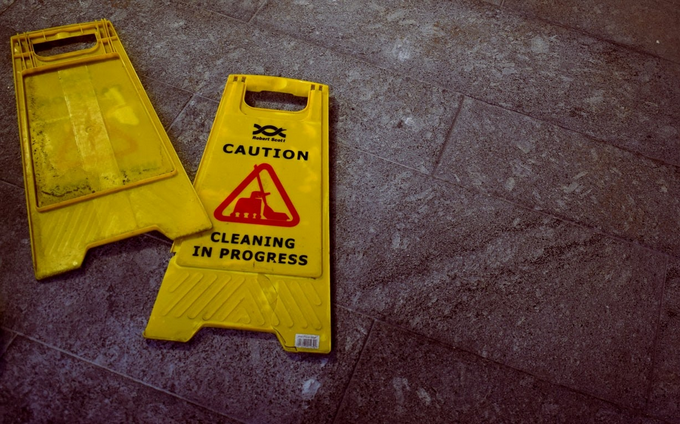Basic Types of Spill Absorbent Materials

Whether you work in an industrial setting or your company tinkers with various projects that may include liquids or chemicals, it can be advantageous to have a basic knowledge of how to clean up spills. Whether you’ve spilled a liquid that can damage a surface or one that might be dangerous to breathe in, you’ll want to know how to get clean up the liquid in the safest, most effective, and efficient way possible. If you want to know what types of spill absorbent materials it might be helpful to have around the house and what you should keep on-hand (or obtain) to clean up any spill, the following guide will help.
What Type of Liquid Needs Absorbing?
While all spills can make a mess or get things wet, some types of liquids require particularly absorbent materials for successful, thorough cleaning. It is essential to completely absorb the following liquids if they spill in your workspace:
- Oil
- Gas
- Turpentine
- Acetone
- Coolant
- Hexane
- Water
- Solvents
- Mercury
- Bio-hazardous liquids
- and more.
Oil Absorbents
Oil is used in many industries, and while it’s useful in helping machines function, it can also create health and safety hazards. Additionally, it’s hard to clean. Therefore, any type of oil that is spilled should be cleaned with an oil absorbent.
General Purpose Absorbents
When liquids that aren’t particularly dangerous or hard to clean are spilled on floors but need to be dried well, a general-purpose absorbent is the answer. You can use general-purpose absorbents for various industrial or commercial spills, plus general-purpose absorbents help prevent slips and falls in the workplace.
Chemical and Hazmat Absorbents
In industries where dangerous chemicals or bio-hazardous liquids may be spilled, you’ll want to rely on chemical or hazmat absorbents. These are specially formulated to pick up potentially hazardous liquids efficiently and effectively. They can also be used for absorbing a variety of water-based fluids like acetone, coolant, turpentine, gas, and more.
Forms of Packaging
Absorbents are used to clean up a wide variety of spills, and they also come in a range of forms and packaging. Here are some different types of absorbent materials and packaging you’ll find and what they’re best suited to clean.
Absorbent Pillows
An absorbent pillow comes as a bag that’s filled with absorbent material. Absorbent pillows are most often used when a large volume of liquid is spilled in a small area.
Absorbent Pads
Absorbent pads are small sheets made out of absorbent material. They are used for much smaller spills, and they can also be put down proactively to guard surfaces in case of a spill.
Absorbent Socks
Absorbent socks look like long cloth tubes, and they are filled with absorbent material. These are used in many typical industrial or mechanical settings to soak up water, coolants, solvents, and oil.
Absorbent Granules
Absorbent granules are loose granules you sprinkle onto a spill. The granules soak up the spill, and then, once the liquid has been absorbed, it is much easier to clean up the piles of granules. Many types of absorbent granules can be used for a wide variety of liquids. Kitty litter is a type of absorbent granule used every day in people’s homes. Absorbent granules are regularly a go-to choice for cleaning up bodily fluids, as well as dangerous chemical spills.
Absorbent Booms
Absorbent booms are a type of absorbent device that is used on water. They float on the surface of the water, and they can soak up materials that do not mix into the water (but float on top), like oil or hydrocarbon. Absorbent booms are a hugely helpful tool for environmental safety and protection because they help keep waterways clean and safe.
Loose Absorbents
Loose absorbents are one of the types of spill absorbent materials used on solid ground or the surface of water or liquids. Like absorbent granules, loose absorbents are not contained in any packaging but are freely applied on top of a spill to soak and clean it up. Loose absorbents can be made from various materials, including clay, cellulose, kaolin, and more.
Reusable Absorbents
Reusable absorbents are products that can be used multiple times to clean up spills. Many people think of cloth towels (like the ones in people’s homes) as reusable absorbents. In a work setting, reusable absorbents can also be rolls, pads, sheets, socks, pillows, and more. The main factor that makes these adsorbents reusable is that they can be laundered after they are used to clean a spill and then used to clean a later spill.
Ecospill Offers Many Types of Spill Absorbent Materials for Your Business
People work with liquids in a wide variety of settings. Whether you are in an industrial field, working on a car’s engine, or conducting an experiment in a lab, there’s always a chance that some liquid you are handling may spill. The best way to ensure you can always effectively clean up what you spill is to ensure you have various types of spill absorbent materials ready to go. You need to understand what materials will clean up any liquid, so you can go to them as needed. With a clear understanding of which materials pick up which liquids, you can always ensure you clean up a spill safely and effectively.
To learn more about obtaining the right spill absorbent material for your situation, check out Ecospill. They aim to offer products that help you clean up liquids and provide products that work faster and more efficiently, which can ultimately save you a considerable amount of time and money.
